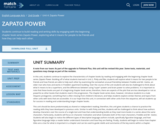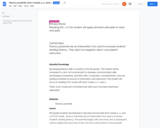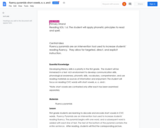
In this unit, students continue to explore the characteristics of chapter books by reading and engaging with the beginning chapter book series Zapato Power. Building off of what students learned in Unit 2, Pinky and Rex, students will explore what it means for two people to be friends and how friends are able to help each other by examining the somewhat unusual friendship between Freddie and Mr. Vaslov, an older man who lives and works in Freddie's apartment building. Over the course of the unit students will also be challenged to think about what it means to be a superhero, and the differences between using'super' powers and brain power to solve problems. It is important to note that these books are part of a beginning chapter book series; therefore, there are aspects of the plot that are less developed or not as powerful as other books that students read in the progression. The chapter book series does, however, introduce students to a male Hispanic protagonist, something that is often missing from children's literature, and helps students explore similar themes and topics from other units with texts that are accessible. It is our hope that this unit, in connection with other units from the sequence, will set students up for success in reading and understanding longer chapter books.
This unit should be done predominately as shared or independent reading; therefore, this unit gives students a chance to practice the reading skills they have developed in previous units. Similar to with Pinky and Rex, students will be challenged to think about how authors develop characters over the course of a single text and how that understanding builds as they read more books in a series about the same characters. Particularly, students will focus on character motivation and what motivates both of the main characters, Freddie and Mr. Vaslov. Students will also begin to notice the different types of descriptive language authors include, specifically figurative language, and how figurative language helps a reader better understand characters and how they are feeling. Finally, students will begin to notice how chapter titles are a clue for what is important in a chapter and can be used to guide retells and summaries of the key events within a chapter.
- Subject:
- Communication and Multimodal Literacy
- English
- Fiction
- Reading
- Writing
- Material Type:
- Assessment
- Homework/Assignment
- Lesson Plan
- Provider:
- Match Fishtank
- Provider Set:
- Fishtank ELA
- Date Added:
- 01/01/2017

